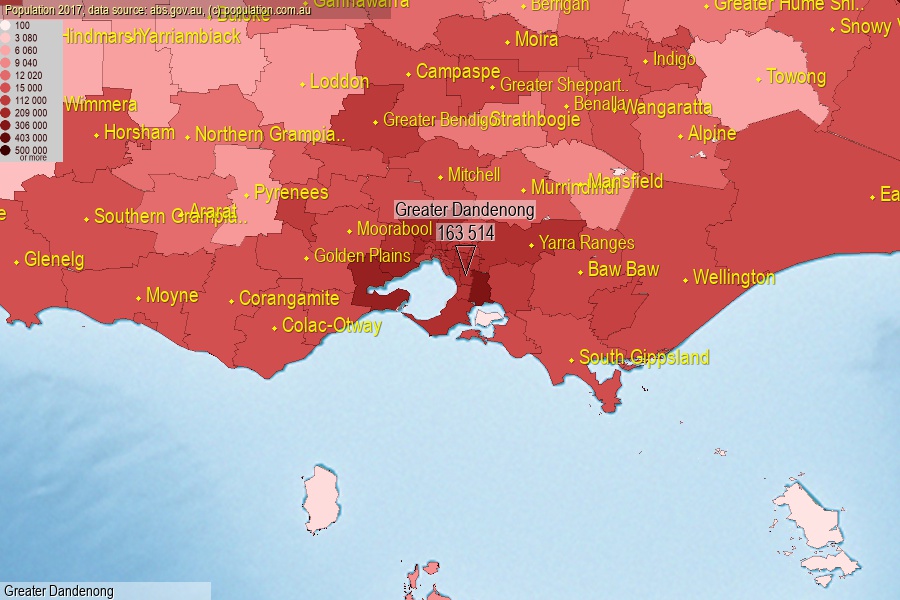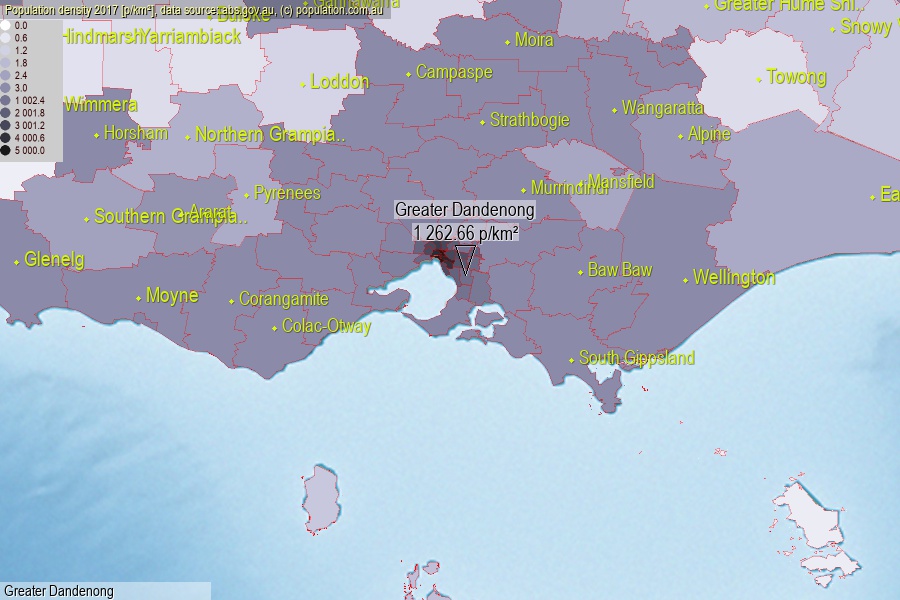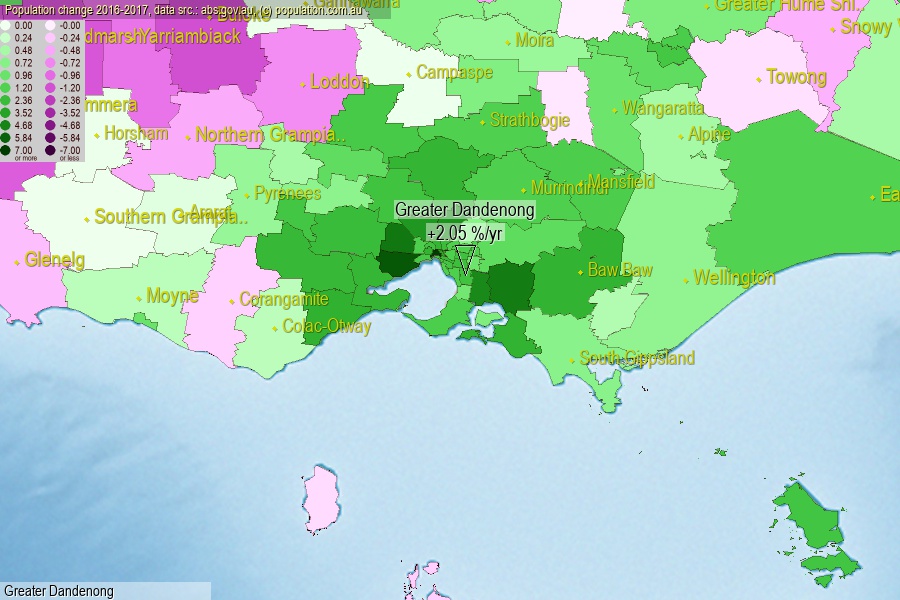 population.com.au
population.com.auLast official estimated population of Greater Dandenong City (as Local Government Area) was 163 514 people (on 2017-06-30)[2]. This was 0.66% of total Australian population and 2.543% of VIC population. Area of Greater Dandenong is 129.50 km², in this year population density was 1 262.66 p/km² . If population growth rate would be same as in period 2016-2017 (+2.05%/yr), Greater Dandenong population in 2025 would be 192 405. [0]



Click to enlarge. Greater Dandenong is located in the center of the images.
Population [people], population density [p./km²] and population change [%/year] [2]
[1996-2001] -0.63 %/Y
[2001-2002] -0.30 %/Y
[2002-2003] -0.22 %/Y
[2003-2004] +0.18 %/Y
[2004-2005] +0.60 %/Y
[2005-2006] +1.57 %/Y
[2006-2007] +2.15 %/Y
[2007-2008] +2.28 %/Y
[2008-2009] +2.10 %/Y
[2009-2010] +1.06 %/Y
[2010-2011] +1.39 %/Y
[2011-2012] +2.07 %/Y
[2012-2013] +2.33 %/Y
[2013-2014] +2.45 %/Y
[2014-2015] +2.58 %/Y
[2015-2016] +2.67 %/Y
[2016-2017] +2.05 %/Y
[0] Calculated with linear interpolation from officially estimated population
[1] Read more about LGA and Australian Statistical Geography Standard (ASGS) on abs.gov.au
[2] Population data from Australian Bureau of Statistics (Population and density: 2017; change: 2016-2017)
[3] Digital Boundaries: Australian Statistical Geography Standard (ASGS) 2016.